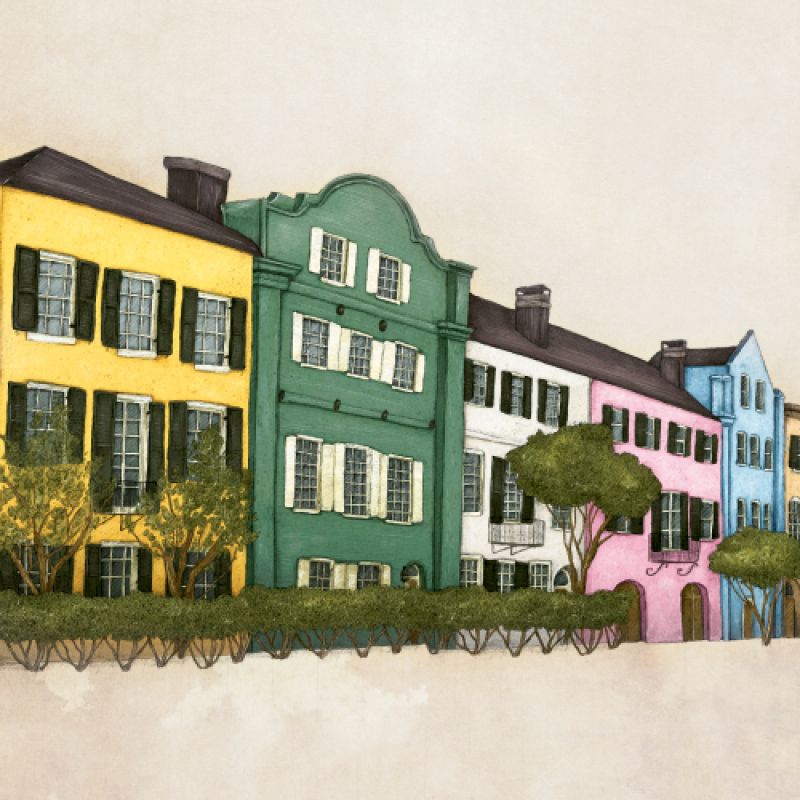
Hot Line
Constructed between the 1740s and 1845, Rainbow Row’s buildings are joined by common walls like typical row houses, yet most boast architectural individuality and their own roof lines.
Waterfront Property
When these storied structures went up, East Bay was the commerce center of the city. Docks came right up to the street, and ships carrying goods from all over the world were moored virtually at the buildings’ doorsteps. It made sense then that the bottom floors hosted businesses, while the upper levels were living quarters for the merchants, with private entrances accessible by stairs from courtyards at the rear.
Ruins to Riches
Like much of Charleston after the Civil War, these houses were in ruins when Charlestonians Susan Pringle Frost and Dorothy Haskell Porcher Legge launched a successful effort to purchase and revitalize them. Eventually, hundreds of buildings would be restored through the organization Miss Frost founded in 1920, the Society for the Preservation of Old Dwellings, still active today as the Preservation Society of Charleston.
Colorful Past
The name “Rainbow Row” was coined in the 1930s after the restoration of 99, 100, and 101 East Bay, which Legge painted pink to reflect Charleston’s close ties to colonial Caribbean architecture. As subsequent houses were fixed up, their owners followed in kind, selecting the blues, yellows, greys, and greens that create the scene we admire today.